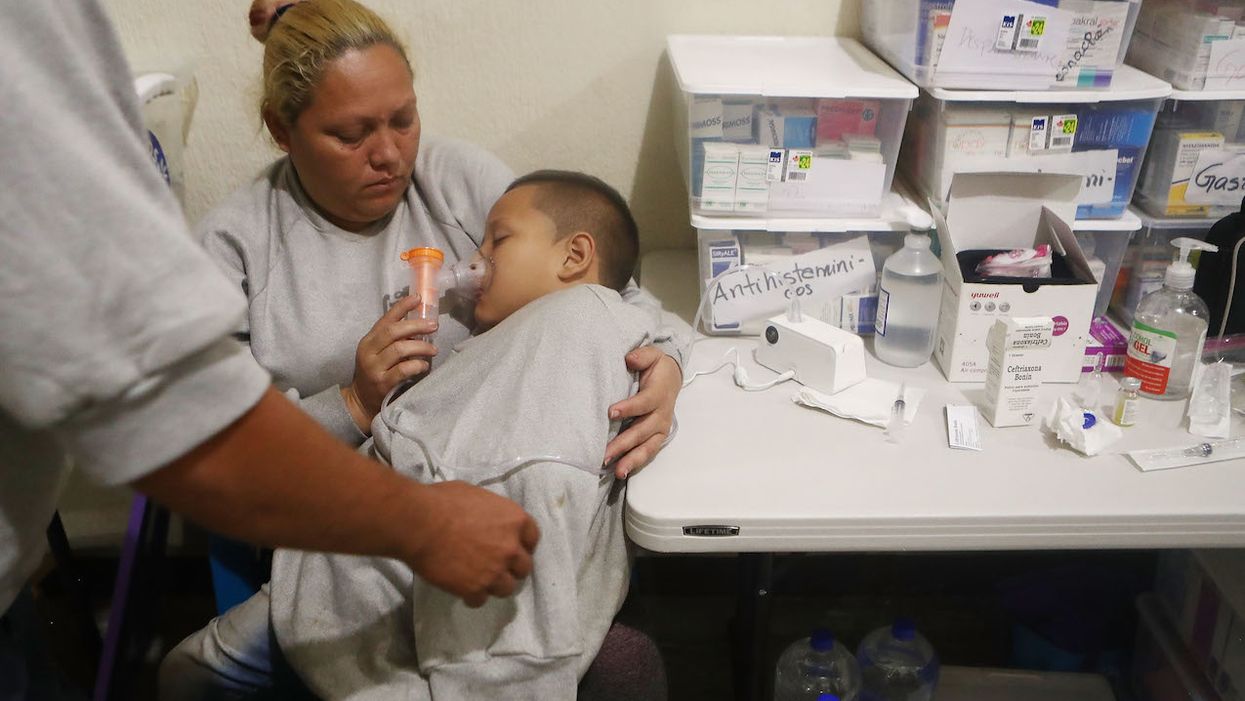
Mario Tama/Getty Images

Agents have spent nearly 20,000 hours transporting sick migrants since Oct. 1
U.S. Border Patrol agents have spent nearly 20,000 hours transporting sick illegal immigrants to and from hospitals for medical evaluations and treatment, so far, this fiscal year, according to the Department of Homeland Security.
A spike in illnesses among the mostly Central American migrants taken into U.S. custody has impacted the number of agents available to perform border security duties and respond to serious threats, a new report showed. A total of 2,224 migrants were hospitalized for various health issues between Dec. 22 and Jan. 24.
Small border communities with short-staffed hospitals have been heavily impacted by the influx.
Since Oct. 1, there were 8,797 large group apprehensions, according to the report. Of those, 7,757 were mostly made up of family units from Guatemala or unaccompanied minors. A large group consists of 100 or more migrants.
Border Patrol agents spent 19,299 hours providing various levels of support for hospital visits, which included transportation and overwatch of each person or family at the hospital.
For example, a group of 247 illegal immigrants was arrested Jan. 15. Of that group, 50 required immediate medical attention and had to be transported to a local hospital.
Nearly every available agent was utilized to assist with medical support, which severely limited law enforcement's ability to process migrants and perform their security duties. As a result, the migrants spent more time in custody, transfers were delayed and the response to illegal crossings was inhibited.
In counties, such as Hidalgo County, New Mexico, where there are fewer than 5,000 residents and who have an average income of about $32,000 a year, there is less money and staff available for county medical services, the Washington Examiner reported. The county has an annual budget of $1.7 million.
Two county officials told the Examiner that the county has seen large groups of up to 300 migrants being dropped off there. They said initially the increase wasn't a problem but by November the numbers of those needing professional medical care began to take its toll.
"For a while there, we were being called every day. They [Border Patrol] wanted us to do their screening because they had a lack of medical personnel," Hidalgo County Emergency Medical Services Director David Whipple told the Examiner.
Whipple's team of six staff members and five volunteers are responsible for covering medical emergencies across the 5,000-square mile county.
Hidalgo County Manager Tisha Green was forced to reach out to state and border officials for help in late December. CBP responded by deploying agents to help alleviate the stress placed on the county's EMS personnel.
Outbreaks of scabies have plagued many migrants who've arrived in Hidalgo County, Whipple said.
"They've had big issues with scabies," Whipple told the Examiner. "That's an ongoing thing."
Scabies is an itchy skin condition caused by a tiny burrowing mite called Sarcoptes scabiei, according to the Mayo Clinic. Intense itching occurs in the area where the mite burrows. It is highly contagious and can spread quickly through close contact.
Another problem is that many of the migrants don't have their childhood vaccinations.
"The biggest concern that I've heard about is not that they're disease-ridden, but the fact that they don't vaccinate. I mean, it would become a county epidemic," Green told the Examiner. "The comment was made that a good 20 of the immigrants walked in with Border Patrol and all of the local residents that were there waiting for appointments were kind of pushed to the side and several of the people got up and left because they didn't want to be around any type of illness they could be bringing in."
To protect the county's residents, each person who's taken into custody should be screened, Whipple said.
One illegal immigrant who was detained recently in a remote part of New Mexico was hospitalized with a growing rash on his leg which was diagnosed as a flesh-eating bacteria, U.S. Border Patrol spokesman Carlos Antunez told the Associated Press Friday.
Flesh-eating bacteria called necrotizing fasciitis are rare but spreads quickly and can be fatal, according to the U.S. Centers for Disease Control. The bacteria usually invade the body through a minor cut, scrape, burn or insect bite. The disease is rarely contagious.
The man will require extensive medical care, Antunez said.